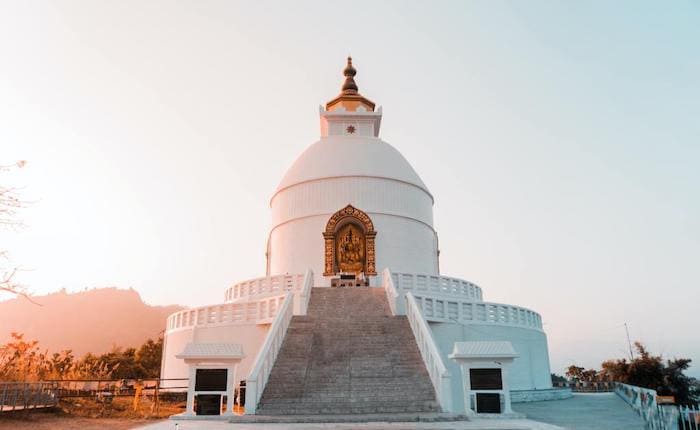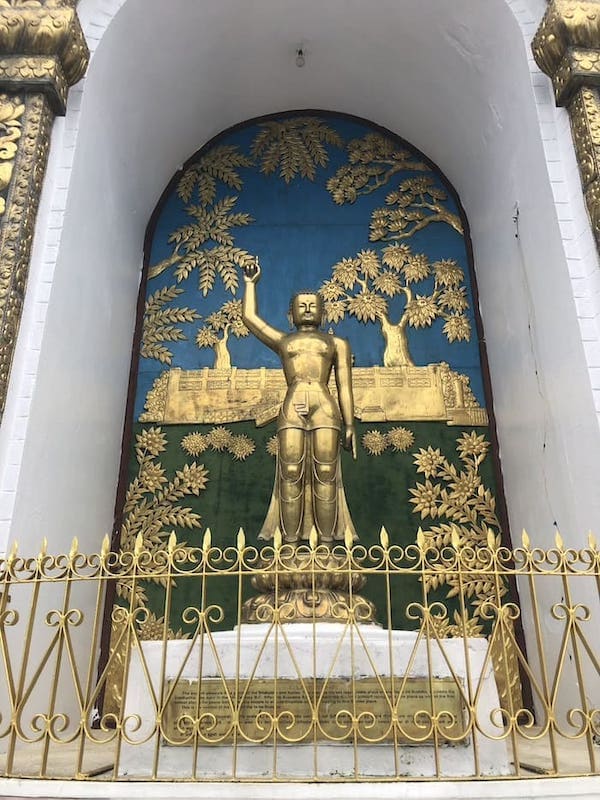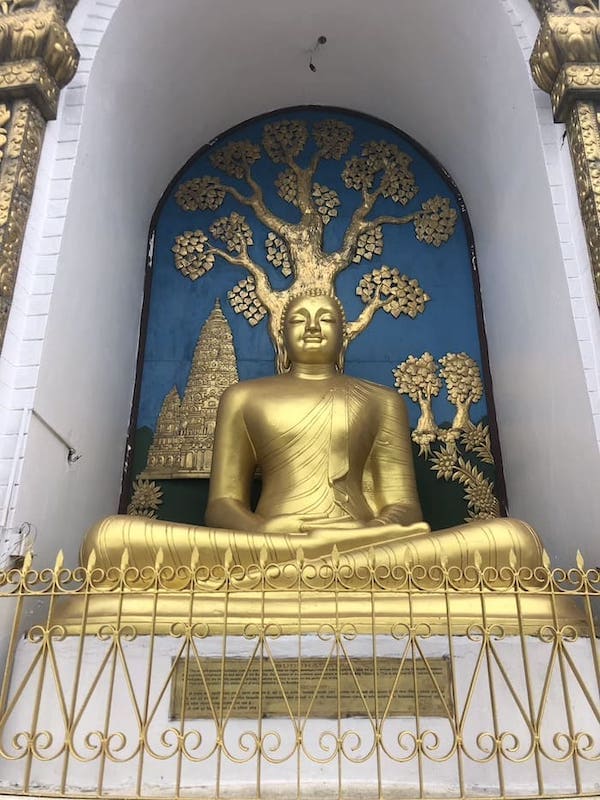The World Peace Pagoda, or ‘Bishwo Shanti Stupa’ in Nepali, is a well-known attraction in Pokhara. Sitting peacefully atop the Anadu Hill on the south side of Lakeside, the Peace Pagoda in Pokhara draws the attention and eyes of everyone that visits the city.
A sign of peace, the Pagoda, is one of two that have been constructed in Nepal, with the other one being built where Buddha was born, in Lumbini, Nepal. With deep spiritual and religious ties, the Peace Pagoda offers its visitors a sense of calmness, views of the city and lake below, and views of the Annapurna Range to the north.
In this account of the Peace Pagoda in Pokhara, I give a quick account of the Pagoda, its history, and a look into its significance for Pokhara and Nepal.
History of Shanti Stupa in Pokhara:
The Peace Pagoda is an important Buddhist monument that was built in Pokhara, Kaski of Nepal. A sign of world peace, the stupa was the first to be built in Nepal (the second was built in Lumbini) and the 71st Peace pagoda built worldwide. The design and concept are originally those of Nipponzan-Myōhōji, who wished to build the structure all around the world in hopes of uniting the people and bringing peace to the people around the world.
Nipponzan-Myōhōji originally came up with the idea of constructing the stupas worldwide in 1947 as a symbol of world peace. However, the construction of the first pagoda in Nepal did not start until September of 1973. Which was when the first foundation stone was laid. Not long after, in November of the same year the prayer hall, housing a statue of Buddha, and the guest house were finished.
Sadly, during the initial construction of the Pagoda on Anada Hill the Panchayati of the area and the Royal Nepalese government, requested the immediate destruction of the Peace Pagoda, citing issues with security in the area as well as the project not officially being passed by the local government.
Construction proceeded for a short time due to the unwavering support of Nipponzan-Myōhōji, monks, and the community, but eventually, the Pagoda was removed.
Nipponzan-Myōhōji’s Peace Pagoda in Pokhara prophecy
Nipponzan-Myōhōji knew that the supporters of the construction of the Peace Pagoda in Pokhara were facing a difficult task. However, even though the construction was going to be difficult he prophesied that the stupa would eventually be rebuilt!
And on the 21st of May, 1992 the Honorable Girija Prasad Koirala came to Anada Hill and re-laid the foundation stone for the construction of the stupa.
Finally, in October of 1999, the former Prime Minister Girija Prasad Koirala returned for the inaugural ceremony of the Peace Pagoda in Pokhara.
Pokhara’s Peace Pagoda Structure and Design:

The world’s 71st Peace Pagoda and Nepal’s first stands at a height of 115 feet and has a diameter of 344 feet. Situated on Anadu Hill on the south side of Lakeside in Pokhara, the Stupa is built at 1,100 meters above sea level (3,600 feet) and on 21.5 ropanies (roughly 2.7 acres). Additionally, a guest house with 12 rooms has also been built within the Stupa’s premises.
Shanti Stupa is a white pagoda situated at the end of a long stone path with flower gardens on either side. The stupa itself has two different tiers for religious visitors and tourists to circumambulate. Both tiers offer spectacular views of Pokhara, Phewa Lake, and of the mountains and hills surrounding the area. The top tier displays four different statues of Buddha that various countries in Asia have donated.
The following four Buddha statues were provided by the ‘Dharmacakra Mudra’ from Japan, ‘Bodh Gaya’ from Sri Lanka, ‘Kushinagar’ from Thailand, and ‘Lumbini’ from Nepal. The four statues correlate with important events related to Buddha and have been named after the country they took place in. The Dharmachakra is placed below the gajur (pinnacle) signifying the wheel of life, dharma as well as the teachings of Buddha.
Moreover, the top part of the golden gajur is where the crystal stone donated by Sri Lanka sits. The crystal stone represents intellect and grace. Finally, the Dharma hall which has been constructed to the side of the Peace Pagoda in Pokhara is where an additional Buddha statue sits, and where Buddhist monks perform daily rituals, as well as large pujas (religious ceremonies), are performed on auspicious dates according to the lunar calendar.
Tourist Attraction – Peace Pagoda in Pokhara:
The Peace Pagoda is a significant tourist attraction. It provides a quiet and peaceful sanctuary from the hustle and bustle of Lakeside and Pokhara. Additionally, on clear days it provides panoramic views of the Himalayas, glimpses of paragliders soaring through the sky, and the Annapurna Cable Car to the North.
Additionally, if you are feeling motivated and full of energy, you can also visit the newly constructed Shiva Statue which sits about another 300 meters (700-800 feet) above the Peace Pagoda.
There are two ways to reach the Stupa, one by driving up to the Pagoda, and two, by hiking up the side of the hill. Depending on your physical capabilities, time, and weather conditions, I would strongly recommend hiking up to the Peace Pagoda, as it is relatively short and easy.
To find out more about how to hike to the Peace Pagoda in Pokhara, you can check out our recap of our boating and hiking experience up to the Peace Pagoda in our ‘Day hike in Pokhara: Peace Pagoda and Shiva Statue‘ blog!




